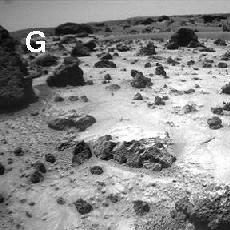This image shows the rock Yogi and tracks from the Rover.
Click on image for full size
Courtesy of NASA
Weathering processes on Mars
Unlike the rocks of Earth, where there are many things which cause erosion, there are only two main weathering agents on Mars: wind and acid fog.
Acid fog is very important, but because there is not a lot of water, the action of sand and wind is the most important thing to cause changes to the planet's surface.
Wind erosion of Mars was examined in the Mars Pathfinder mission. Rocks examined by the Pathfinder's Rover found evidence of the following erosion features:
A wind tail is shown in the lee of the rock "
Yogi" in the picture to the left.
Sand and dust from the surface is whipped up by the winds of Mars and distributed around the globe in global dust storms. The force of winds during these storms pounds sand into the rock formations, contributing toward the breakdown and recycling of the Martian surface.
You might also be interested in:
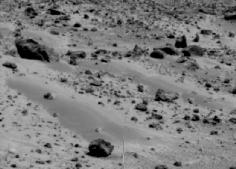
Sand grains on Earth are usually made of quartz. Sand grains of Mars seem to come from basalt. They seem to be particles which are cemented together, rather than round crystal fragments such as sand grains
...more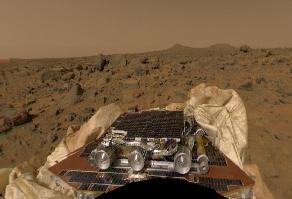
The goal of the Mars Pathfinder (MPF) mission was to analyze the rocks and soil of Mars. The MPF was actually 2 parts, a lander and a rover. The lander stayed right where it landed while the rover named
...more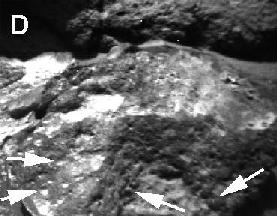
This image shows pits and holes (ventifacts) in a small rock found by the Mars Pathfinder Rover. These ventifacts are artifacts of weathering on Mars and were created by wind erosion. The Souffle rock
...more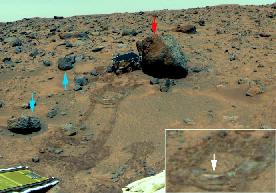
Even though the rocks seem to be much the same, scientists can see three basic differences in these rocks. These differences help them figure out more about weathering processes on Mars and where the soils
...more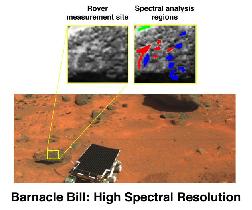
The rocks explored by the Mars Pathfinder's Rover are classified into two groups according to how they eroded. Rocks put in place as a result of an impact which forms a crater are usually much less eroded
...more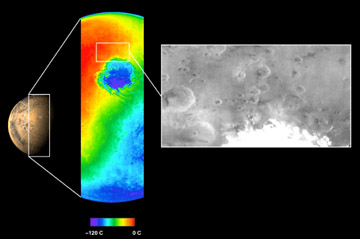
The Mars Odyssey was launched April 7, 2001, from Florida. After a six-month, 285 million-mile journey, the Odyssey arrived at Mars on October 24, 2001. The Odyssey is in its aerobraking phase right now.
...more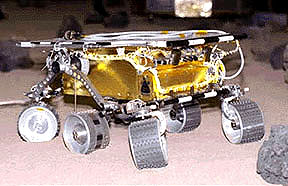
The Mars 2005 mission is still in the planning stages. It is set to launch in the year 2005.
...more


